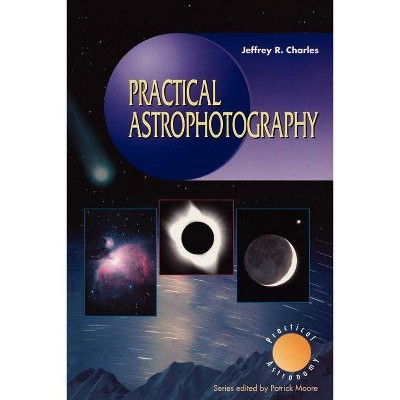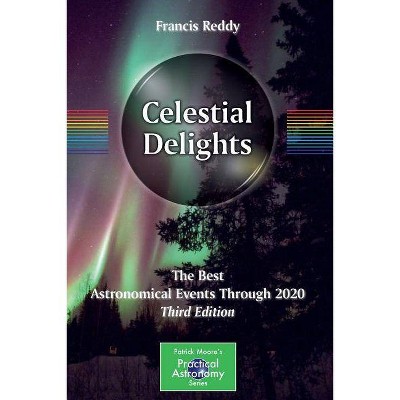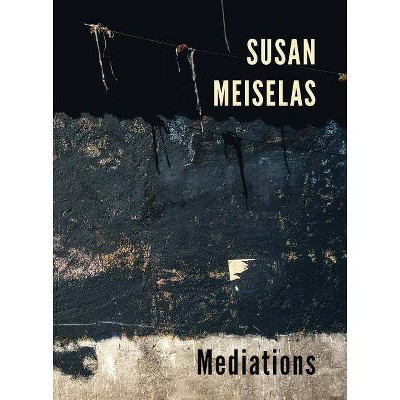The 100 Best Astrophotography Targets - (Patrick Moore Practical Astronomy) by Ruben Kier (Paperback)

Similar Products
Products of same category from the store
AllProduct info
<p/><br></br><p><b> About the Book </b></p></br></br><p>This is the first guidebook to specifically target the best objects for backyard astrophotography. It reveals, for each month of the year, the choicest celestial treasures within the reach of a commercial CCD camera and how to get the most spectacular results.</p><p/><br></br><p><b> Book Synopsis </b></p></br></br><p>Any amateur astronomer who is interested in astrophotography, particularly if just getting started, needs to know what objects are best for imaging in each month of the year. These are not necessarily the same objects that are the most spectacular or intriguing visually. The camera reveals different things and has different requirements. What objects in the sky tonight are large enough, bright enough, and high enough to be photographed? This book reveals, for each month of the year, the choicest celestial treasures within the reach of a commercial CCD camera. Helpful hints and advice on framing, exposures, and filters are included. Each deep sky object is explained in beautiful detail, so that observers will gain a richer understanding of these astronomical objects.</p> <p>This is not a book that dwells on the technology of CCD, Webcam, wet, or other types of astrophotography. Neither is it a book about in-depth computer processing of the images (although this topic is included). Detailed discussions of these topics can be found in other publications. This book focuses on what northern latitude objects to image at any given time of the year to get the most spectacular results.</p><p/><br></br><p><b> From the Back Cover </b></p></br></br><p>Astronomical observing and photography are favorite pastimes of yours. You want to combine the two, but you're not sure how. Or perhaps you have dabbled in astronomy for a while and want to take another step. </p> <p></p> <p>What do you photograph? Will something that looks amazing as you peer at it through a telescope look the same in a photograph? There are so many dazzling sights in the night sky. How to choose? </p> <p></p> <p>Ruben Kier has some answers for you. With his technical expertise and wide experience as both a visual observer and a photographer, he can help you attain some of the best images you can imagine, perhaps ones you will want to send to a magazine or proudly put up on your website. And the secret is - it's not that hard! It's mostly a matter of choosing the right subjects and then doing the necessary post-processing to get results that will dazzle. </p> <p></p> <p>So get out there on the next clear night and create something to show for your efforts. Your friends will be impressed, and you will be thrilled at how you are able to combine the two passions of your life into one.</p><p/><br></br><p><b> Review Quotes </b></p></br></br><br><p>From the reviews: </p><p>"Kier comes to the rescue with targets that are well placed at different times during each month. ... Each target has a colour image and a description, plus advice on the equipment you'll need. There's useful advice on processing too. ... seasoned imagers will enjoy this book." (Steve Richards, Sky at Night Magazine, February, 2010) </p><p>"This book is one of the Patrick Moore's Practical Astronomy series from Springer, aimed at the practising ... amateur astronomer. ... The book's intent is to provide a visually compelling list of the 100 most interesting deep sky objects from the perspective of a digital imager, more precisely of the CCD user. ... This book is a good starter for going beyond the early shots and provides a reasonable reference on what to expect from each target ... ." (Andrea Tasselli, Journal of the British Astronomical Association, Vol. 120 (1), 2010) </p><p>"Ruben Kier, a highly accomplished astrophotographer, has compiled an impressive list of 100 objects, arranged in order of when they are best placed for observers in the Northern Hemisphere. ... Though the book is clearly aimed at the established imager ... . I was particularly impressed at how well some deep sky objects can now be imaged even with the full moon in the sky. The book will serve as an inspiration to those wishing to take their CCD imaging to the next level." (Neil English, Astronomy Now, May, 2010)</p><br>
Price History
Cheapest price in the interval: 39.49 on October 22, 2021
Most expensive price in the interval: 39.49 on December 20, 2021
Price Archive shows prices from various stores, lets you see history and find the cheapest. There is no actual sale on the website. For all support, inquiry and suggestion messagescommunication@pricearchive.us




















